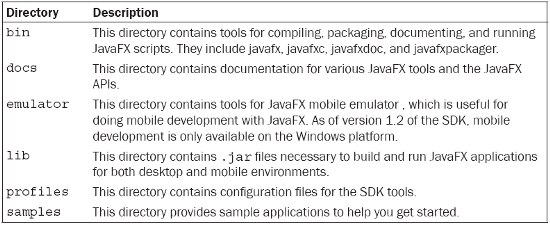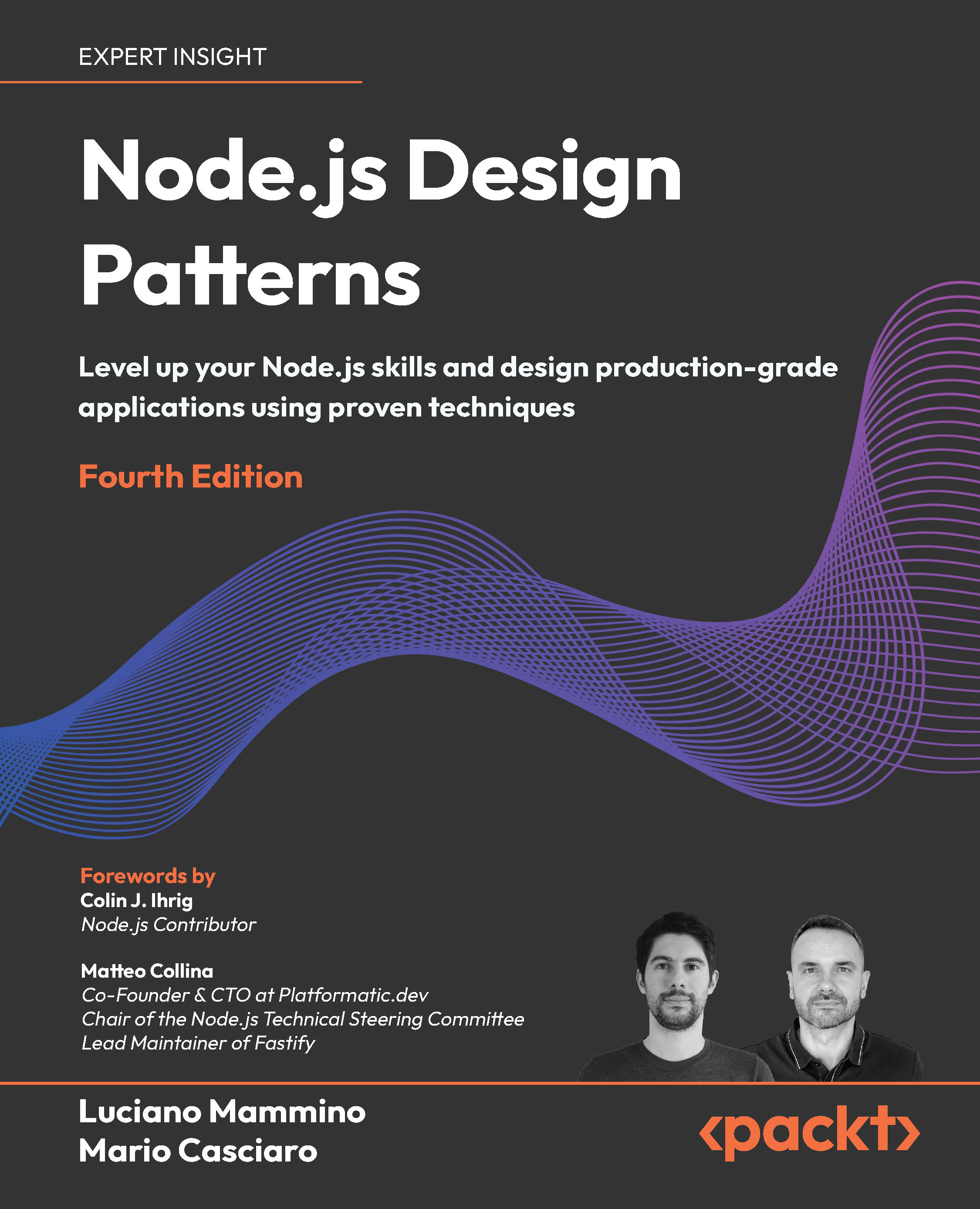(For more resources on JavaFX, see here.)
Introduction
Today, in the age of Web 2.0, AJAX, and the iPhone, users have come to expect their applications to provide a dynamic and engaging user interface that delivers rich graphical content, audio, and video, all wrapped in GUI controls with animated cinematic-like interactions. They want their applications to be connected to the web of information and social networks available on the Internet.
Developers, on the other hand, have become accustomed to tools such as AJAX/HTML5 toolkits, Flex/Flash, Google Web Toolkit, Eclipse/NetBeans RCP, and others that allow them to build and deploy rich and web-connected client applications quickly. They expect their development languages to be expressive (either through syntax or specialized APIs) with features that liberate them from the tyranny of verbosity and empower them with the ability to express their intents declaritively.
The Java proposition
During the early days of the Web, the Java platform was the first to introduce rich content and interactivity in the browser using the applet technology (predating JavaScript and even Flash). Not too long after applets appeared, Swing was introduced as the unifying framework to create feature-rich applications for the desktop and the browser. Over the years, Swing matured into an amazingly robust GUI technology used to create rich desktop applications. However powerful Swing is, its massive API stack lacks the lightweight higher abstractions that application and content developers have been using in other development environments. Furthermore, the applet's plugin technology was (as admitted by Sun) neglected and failed in the browser-hosted rich applications against similar technologies such as Flash.
Enter JavaFX
The JavaFX is Sun's (now part of Oracle) answer to the next generation of rich, web-enabled, deeply interactive applications. JavaFX is a complete platform that includes a new language, development tools, build tools, deployment tools, and new runtimes to target desktop, browser, mobile, and entertainment devices such as televisions. While JavaFX is itself built on the Java platform, that is where the commonalities end. The new JavaFX scripting language is designed as a lightweight, expressive, and a dynamic language to create web-connected, engaging, visually appealing, and content-rich applications.
The JavaFX platform will appeal to both technical designers and developers alike. Designers will find JavaFX Script to be a simple, yet expressive language, perfectly suited for the integration of graphical assets when creating visually-rich client applications. Application developers, on the other hand, will find its lightweight, dynamic type inference system, and script-like feel a productivity booster, allowing them to express GUI layout, object relationship, and powerful two-way data bindings all using a declarative and easy syntax. Since JavaFX runs on the Java Platform, developers are able to reuse existing Java libraries directly from within JavaFX, tapping into the vast community of existing Java developers, vendors, and libraries.
This is an introductory article to JavaFX. Use its recipes to get started with the platform. You will find instructions on how to install the SDK and directions on how to set up your IDE.
Installing the JavaFX SDK
The JavaFX software development kit (SDK) is a set of core tools needed to compile, run, and deploy JavaFX applications. If you feel at home at the command line, then you can start writing code with your favorite text editor and interact with the SDK tools directly. However, if you want to see code-completion hints after each dot you type, then you can always use an IDE such as NetBeans or Eclipse to get you started with JavaFX (see other recipes on IDEs). This section outlines the necessary steps to set up the JavaFX SDK successfully on your computer. These instructions apply to JavaFX SDK version 1.2.x; future versions may vary slightly.
Getting ready
Before you can start building JavaFX applications, you must ensure that your development environment meets the minimum requirements. As of this writing, the following are the minimum requirements to run the current released version of JavaFX runtime 1.2.
Minimum system requirements

How to do it...
The first step for installing the SDK on you machine is to download it from http://javafx.com/downloads/. Select the appropriate SDK version as shown in the next screenshot.

Once you have downloaded the SDK for your corresponding system, follow these instructions for installation on Windows, Mac, Ubuntu, or OpenSolaris.
Installation on Windows
- Find and double-click on the newly downloaded installation package (.exe file) to start.
- Follow the directions from the installer wizard to continue with your installation.
Make sure to select the location for your installation. The installer will run a series of validations on your system before installation starts. If the installer finds no previously installed SDK (or the incorrect version), it will download a SDK that meets the minimum requirements (which lengthens your installation).
Unlock access to the largest independent learning library in Tech for FREE!
Get unlimited access to 7500+ expert-authored eBooks and video courses covering every tech area you can think of.
Renews at $15.99/month. Cancel anytime
Installation on Mac OS
- Prior to installation, ensure that your Mac OS meets the minimum requirements.
- Find and double-click on the newly downloaded installation package (.dmg file) to start.
- Follow the directions from the installer wizard to continue your installation.
- The Mac OS installer will place the installed files at the following location:/Library/Frameworks/JavaFX.framework/Versions/1.2.
Installation on Ubuntu Linux and OpenSolaris
- Prior to installation, ensure that your Ubuntu or OpenSolaris environment meets the minimum requirements.
- Locate the newly downloaded installation package to start installation. For Linux, the file will end with *-linux-i586.sh. For OpenSolaris, the installation file will end with *-solaris-i586.sh.
- Move the file to the directory where you want to install the content of the SDK.
- Make the file executable (chmod 755) and run it. This will extract the content of the SDK in the current directory.
- The installation will create a new directory, javafx-sdk1.2, which is your JavaFX home location ($JAVAFX_HOME).
- Now add the JavaFX binaries to your system's $PATH variable, (export PATH=$PATH:$JAVAFX_HOME/bin).
When your installation steps are completed, open a command prompt and validate your installation by checking the version of the SDK.
$> javafx -version
$> javafx 1.2.3_b36
You should get the current version number for your installed JavaFX SDK displayed.
How it works...
Version 1.2.x of the SDK comes with several tools and other resources to help developers get started with JavaFX development right away.
The major (and more interesting) directories in the SDK include:

Setting up JavaFX for the NetBeans IDE
The previous recipe shows you how to get started with JavaFX using the SDK directly. However if you are more of a syntax-highlight, code-completion, click-to-build person, you will be delighted to know that the NetBeans IDE fully supports JavaFX development. JavaFX has first-class support within NetBeans, with functionalities similar to those found in Java development including:
- Syntax highlighting
- Code completion
- Error detection
- Code block formatting and folding
- In-editor API documentation
- Visual preview panel
- Debugging
- Application profiling
- Continuous background build
- And more...
This recipe shows how to set up the NetBeans IDE for JavaFX development. You will learn how to configure NetBeans to create, build, and deploy your JavaFX projects.
Getting ready
Before you can start building JavaFX applications in the NetBeans IDE, you must ensure that your development environment meets the minimum requirements for JavaFX and NetBeans (see previous recipe Installing the JavaFX SDK for minimum requirements). Version 1.2 of the JavaFX SDK requires NetBeans version 6.5.1 (or higher) to work properly.
How to do it...
As a new NetBeans user (or first-time installer), you can download NetBeans and JavaFX bundled and ready to use. The bundle contains the NetBeans IDE and all other required JavaFX SDK dependencies to start development immediately. No additional downloads are required with this option.
To get started with the bundled NetBeans, go to http://javafx.com/downloads/ and download the NetBeans + JavaFX bundle as shown in the next screenshot (versions will vary slightly as newer software become available).

 United States
United States
 Great Britain
Great Britain
 India
India
 Germany
Germany
 France
France
 Canada
Canada
 Russia
Russia
 Spain
Spain
 Brazil
Brazil
 Australia
Australia
 South Africa
South Africa
 Thailand
Thailand
 Ukraine
Ukraine
 Switzerland
Switzerland
 Slovakia
Slovakia
 Luxembourg
Luxembourg
 Hungary
Hungary
 Romania
Romania
 Denmark
Denmark
 Ireland
Ireland
 Estonia
Estonia
 Belgium
Belgium
 Italy
Italy
 Finland
Finland
 Cyprus
Cyprus
 Lithuania
Lithuania
 Latvia
Latvia
 Malta
Malta
 Netherlands
Netherlands
 Portugal
Portugal
 Slovenia
Slovenia
 Sweden
Sweden
 Argentina
Argentina
 Colombia
Colombia
 Ecuador
Ecuador
 Indonesia
Indonesia
 Mexico
Mexico
 New Zealand
New Zealand
 Norway
Norway
 South Korea
South Korea
 Taiwan
Taiwan
 Turkey
Turkey
 Czechia
Czechia
 Austria
Austria
 Greece
Greece
 Isle of Man
Isle of Man
 Bulgaria
Bulgaria
 Japan
Japan
 Philippines
Philippines
 Poland
Poland
 Singapore
Singapore
 Egypt
Egypt
 Chile
Chile
 Malaysia
Malaysia

















